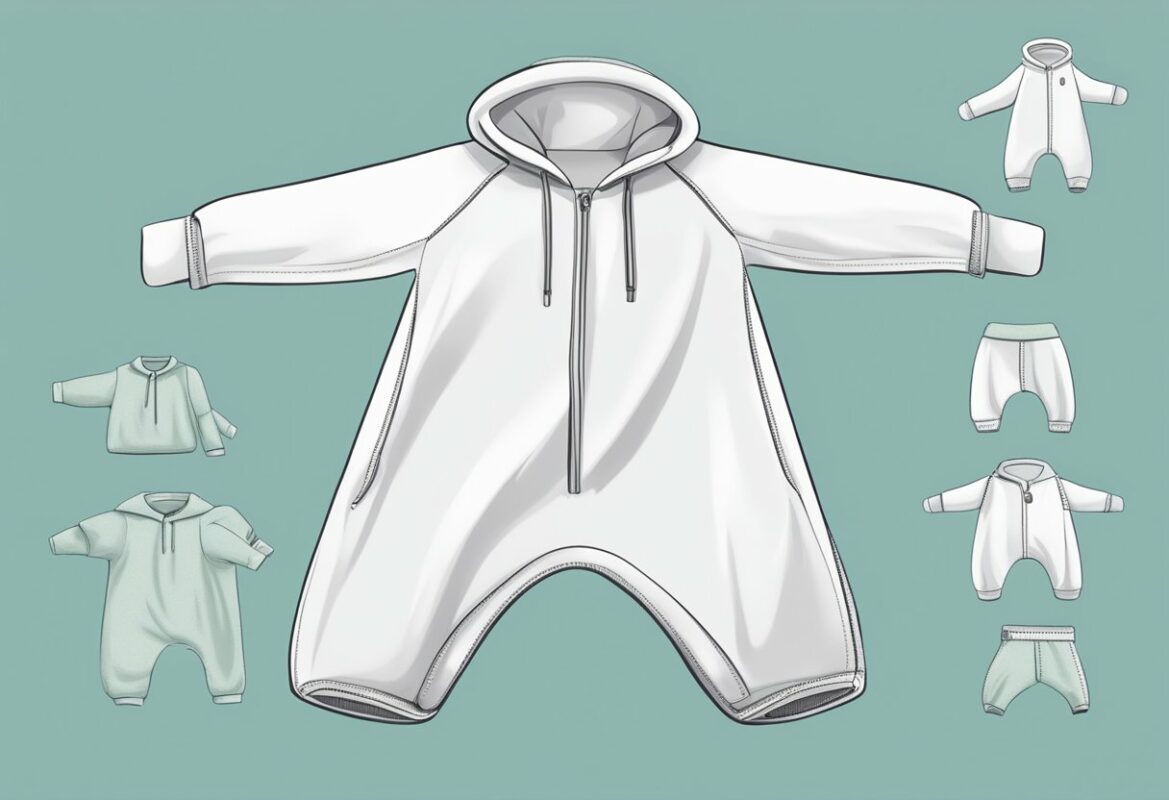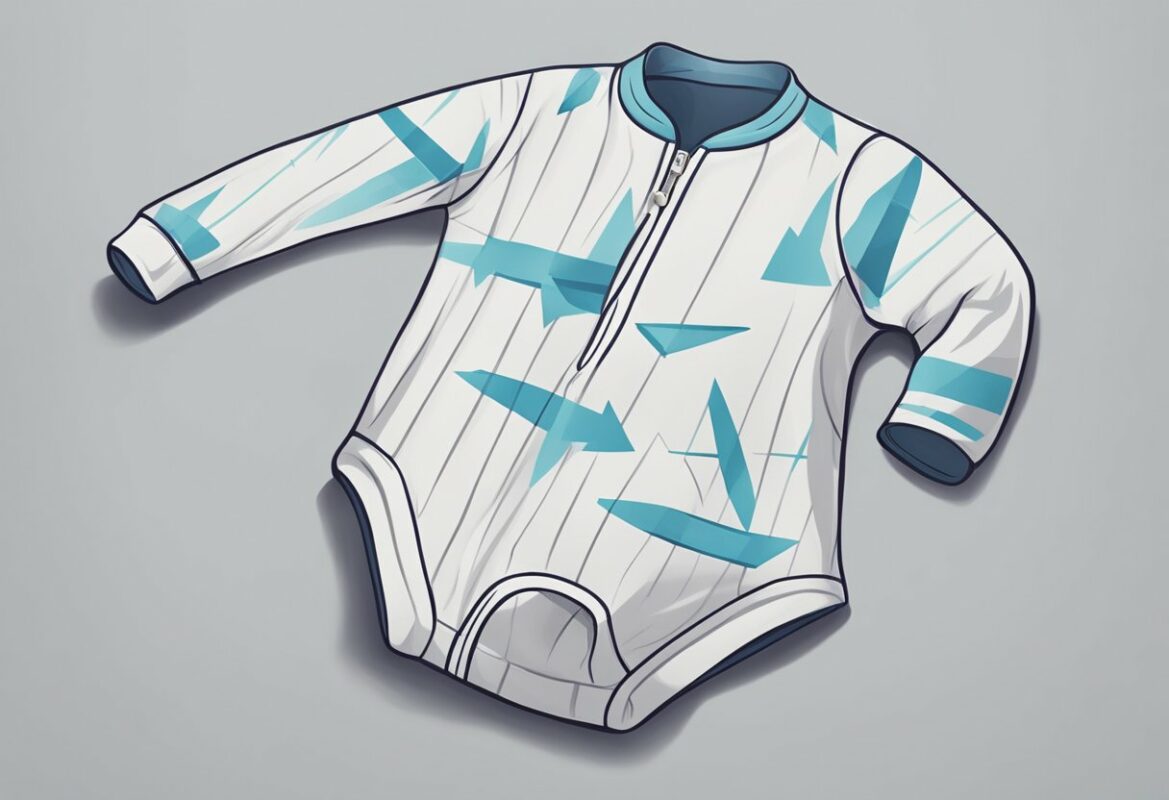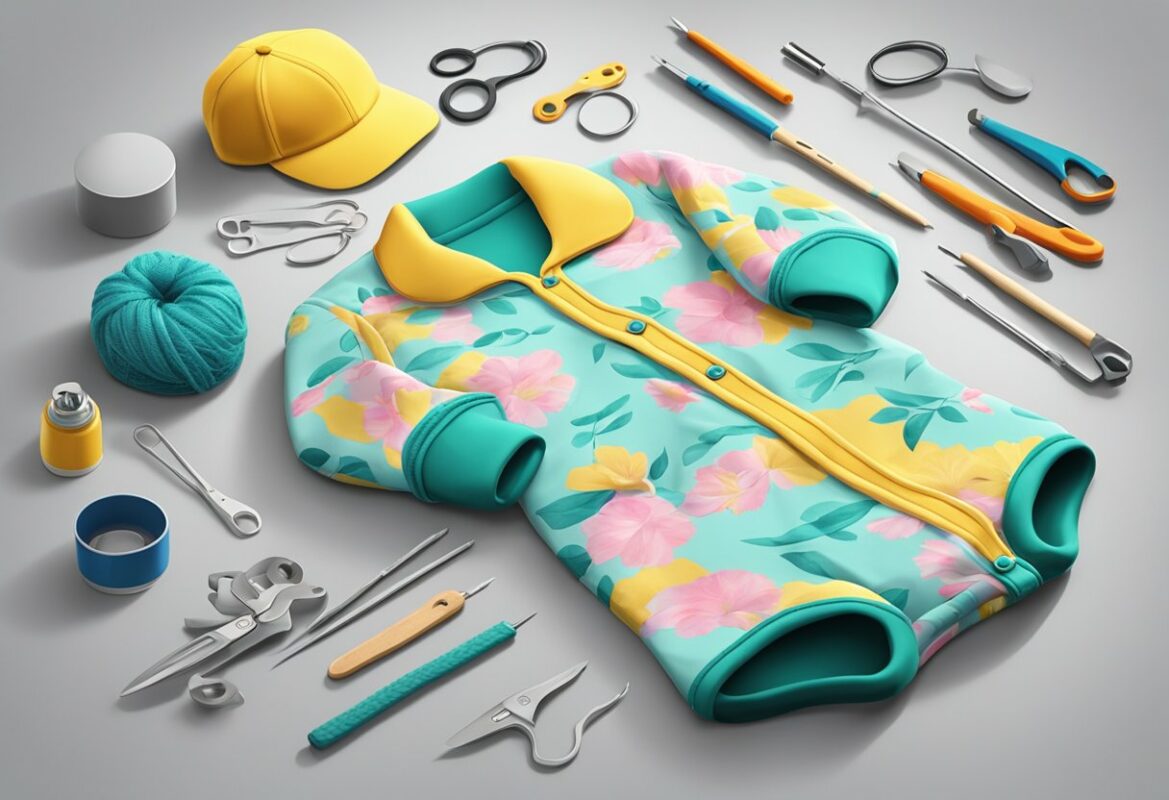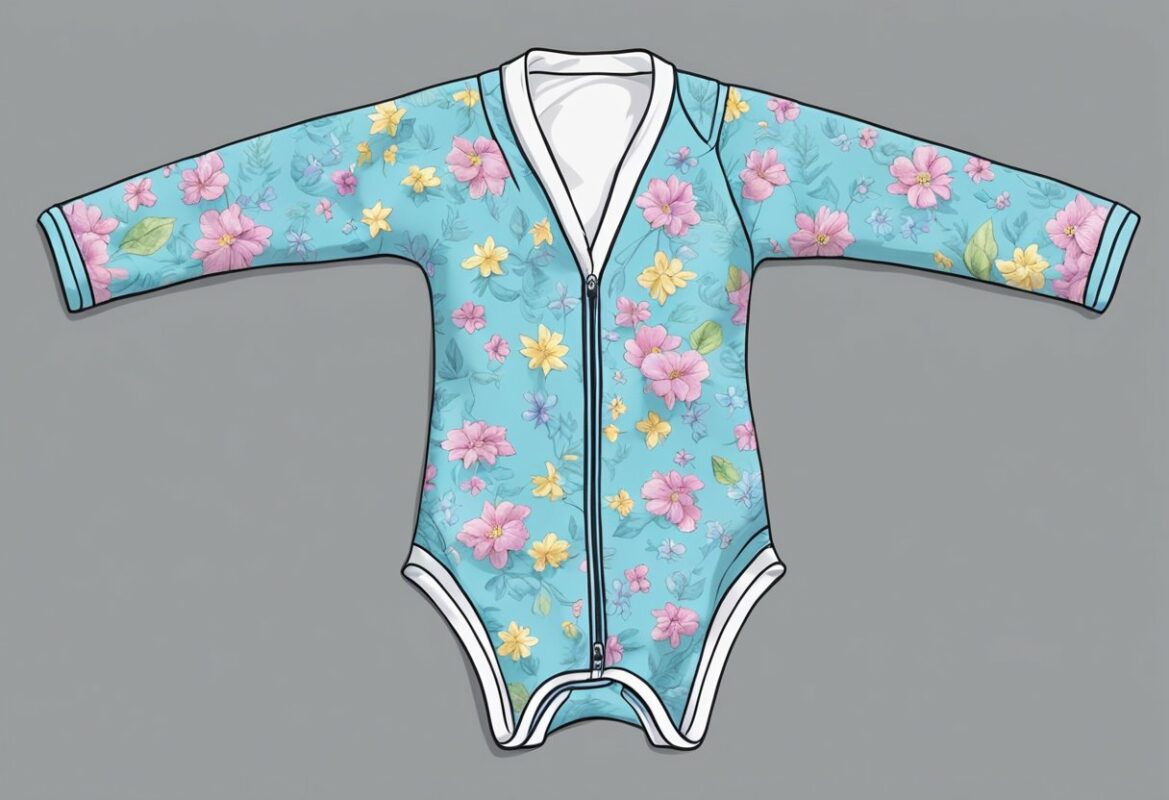Pajamas
How to Stretch Out a One Piece: Easy Techniques for a Better Fit
Are you tired of bodysuits that feel just a bit too snug? Whether it’s for a baby or an adult, nobody likes feeling constricted in their cozy outfit.
The good news is that you don’t have to let your too-tight one-piece go to waste. You can easily stretch out a one-piece for a better fit and improved comfort.
Key Takeaways
- Stretch a one-piece for a better fit and comfort.
- Use gentle techniques to avoid damaging the fabric.
- Maintaining the one-piece ensures long-term use.
Start by choosing a method that will gently loosen the fabric without causing damage. This could involve soaking the one-piece in a special water solution or using your hands to carefully pull at the fabric.
Each option has its benefits, making it easy to personalize the process based on the material and size of the one-piece.
Once you have achieved the desired fit, consider how you can style and layer your one-piece for added warmth or flair.
Remember that careful maintenance will keep your newly stretched garment in excellent shape for future wears. With these simple techniques, a snug one-piece will no longer be a problem.
Understanding Bodysuits
Bodysuits are versatile garments that come in different styles and materials, each suited for specific needs. They are popular for their comfort and practicality, making them a staple in both baby and adult wardrobes.
Types of Bodysuits
There are several types of bodysuits available, catering to varied preferences.
Bodysuits are classic bodysuits, often used for babies, that provide a snug fit. These typically have snap closures at the bottom for easy diaper changes.
For adults, options expand to include turtleneck bodysuits, which offer extra warmth around the neck, and tank-style unitards, perfect for warmer weather or layering. There are also full-body unitards, often used for sports or lounging, providing coverage from neck to ankles.
Choosing the Right Material
The choice of material in bodysuits greatly impacts comfort and function.
Cotton is a top pick, being soft, breathable, and absorbent, making it ideal for babies and sensitive skin.
Polyester blends offer more stretch and durability, useful for active wear or form-fitting adult bodysuits.
For those needing extra warmth, fleece is a cozy material that provides insulation. It’s common in colder climates or for cozy sleepwear. In contrast, breathable fabrics like linen or lightweight cotton are preferable in hotter weather, providing comfort without causing overheating.
Preparation for Stretching

In preparing to stretch out a one-piece, it’s essential to assess its current fit and gather tools that will assist in effectively modifying its size without causing damage. These steps ensure the best results.
Assessing One Piece Fit
Before making adjustments, evaluate how the one-piece fits the person wearing it.
Check the areas that feel too tight, often around the chest, waist, and hips. Focus on specific parts to identify where extra room is needed.
Consider whether the one-piece has buttons, snaps, or a zipper, as these can influence which areas may need more attention.
Measure the dimensions of these areas. Note any unique design features, like the seam allowance, which provides some room for alteration.
With these measurements and observations in hand, decide whether stretching or minor sewing adjustments might provide a better fit.
Gathering Necessary Tools
Once the fit assessment is complete, gather all required tools.
For stretching alone, a spray bottle, fabric conditioner, and a flat surface can be useful for manually stretching the fabric.
In cases where sewing adjustments are needed, a sewing machine may be necessary, especially for handling resilient fabrics or making more significant modifications.
Buttons, snaps, and other hardware might need reinforcing or repositioning as the one-piece is adjusted.
Prepare with a variety of sewing supplies like needles, thread, and extra fabric if extensions are required.
Having the right tools ensures that any alteration preserves the appearance and function of the one-piece.
Stretching Techniques

Stretching a one-piece can improve its fit and comfort. This can be achieved using different approaches like manual stretching, wet methods, and even using a sewing machine for alterations.
Manual Stretching Methods
Manual stretching allows you to adjust the fit of a one-piece directly.
Start by laying the one-piece on a flat surface. Gently pull the fabric in all directions to stretch it evenly. Focus on areas that feel tight or restrictive.
Be cautious not to overstretch, as this can damage the fabric. It’s helpful to use a ruler or tape measure to ensure consistent stretching.
This process is suitable for minor adjustments, particularly when the one-piece is worn often and needs slight refinements for everyday comfort.
Wet Stretching Process
Wet stretching involves using water to assist in expanding fabric.
Begin by soaking the one-piece in lukewarm water. Once soaked, carefully wring out excess water without twisting the fabric too much.
Lay it on a towel and pull the desired areas gently.
Let the one-piece dry flat while it is pinned in place to maintain its new size.
This method is effective when more significant stretching is required. It is especially useful for fabrics that are prone to shrinking after washing, helping to regain their original fit and ease.
Using a Sewing Machine
For a more permanent adjustment, a sewing machine can be used to alter the one-piece’s fit.
If the one-piece is too tight in certain areas, adding fabric inserts can provide extra room. Choose a compatible fabric for seamless integration.
Attach the inserts by sewing along the seams. Alternatively, elastic can be added to areas like the waist to allow some stretch.
This approach not only enhances comfort but can also add a decorative touch with contrasting or complementary fabrics, expanding the one-piece’s wearability.
Styling and Layering Tips
Styling a one-piece can make it versatile for different occasions, while smart layering helps you stay warm and comfortable. Explore creative ways to accessorize and layer your one-piece to elevate your fashion game.
Accessorizing Your One Piece
Adding accessories to a one-piece can transform it from simple to stylish.
Consider belts to define the waistline and add structure. Scarves in complementary colors or patterns introduce flair and warmth.
Pairing your one-piece with hats, like beanies or berets, offers an extra style element.
Buttons are a functional accessory that can be both decorative and practical. Swap out basic buttons for more vibrant or vintage ones to add character and individuality.
Accessories like chunky necklaces or statement earrings can provide a striking contrast against the fabric of the one-piece.
Layering for Different Looks
Layering with a one-piece allows for experimentation with different styles.
For a cozy, relaxed look, wear it over a simple turtleneck, which adds warmth and dimension. A one-piece with a looser fit can be layered with a fitted jacket to create contrast and structure.
To achieve a more formal appearance, add a blazer over the one-piece. This combination offers an elegant touch, suitable for more formal occasions.
Mixing textures, like pairing a fleece-lined one-piece with a smooth silk scarf, can create visual interest.
These layering techniques are practical and stylish, helping adapt the one-piece to any season or event.
Care and Maintenance
Taking care of a one-piece involves proper washing, drying, and storage. These steps help preserve comfort and maintain the overall look and feel of the pajamas. The right care routines keep materials in top shape and extend the lifespan of the garment.
Washing and Drying
For washing, it’s important to consider the materials of the one-piece.
Gentle cycles with cold water and mild detergent are typically best to prevent damage. For delicate fabrics like polyester, washing by hand is an option.
Avoid bleach and fabric softeners as these can harm the fabric.
After washing, squeeze out excess water gently. Do not wring or twist the fabric to avoid stretching.
Lay the one-piece flat on a clean towel to air dry. Hanging can distort the shape.
Storage Solutions
Storing a one-piece properly involves keeping it in a shape that maintains comfort and prevents damage.
Fold the one-piece neatly and store it in a drawer or on a shelf to avoid stretching. Using drawer organizers can help ensure it stays folded.
For long-term storage, make sure the one-piece is clean and dry. Avoid storing in direct sunlight or damp places to keep the colors and fabric in good condition.
Troubleshooting Common Issues

Stretching out a one-piece can sometimes lead to new problems. Overstretched fabric and malfunctioning buttons or snaps are common issues. Addressing them effectively is crucial for maintaining the one-piece’s fit and comfort.
Addressing Overstretched Bodysuits
When a one-piece becomes overstretched, it may lose its snug fit. This can make it less effective in maintaining warmth or style.
To fix this, gently wash the one-piece in lukewarm water mixed with a mild fabric conditioner.
Let it air dry on a flat surface, as hanging may further stretch the fabric.
If the one-piece remains too loose, a quick sewing adjustment can help. Pinching a seam and stitching it tighter can restore a better fit without affecting comfort.
This method often works well for cotton or polyester bodysuits.
Fixing Snaps and Buttons
Snaps and buttons on bodysuits can sometimes become loose or fall off.
To address this, first check that the buttonholes or snap areas are not damaged. If a snap or button needs replacing, use a sewing kit to securely attach a new one.
Ensure the snaps align properly to prevent them from popping open unexpectedly. For buttons, sew them tightly with several loops of thread to withstand daily wear.
If a snap is repeatedly problematic, consider reinforcing the fabric with a small patch to give the snap more support. Regularly inspecting and maintaining these closures can extend the life of the one-piece.
Frequently Asked Questions
Stretching out a one-piece requires gentle techniques to avoid damaging the fabric. Methods range from using household items like conditioner to specific techniques for different materials such as polyester.
What are some effective methods for stretching a one-piece for adults?
Stretching a one-piece can be done by soaking it in a mixture of lukewarm water and baby shampoo. This solution helps relax the fibers.
After soaking, gently stretch the one-piece by hand to the desired size while it’s still damp.
Can you use a conditioner to stretch out a tight shirt or one-piece?
Yes, hair conditioner can be used to stretch fabrics.
Add a generous amount of conditioner to a basin of lukewarm water. Soak the one-piece for about 30 minutes, then gently stretch it while rinsing the conditioner off under cool water.
What is the best way to stretch out a shirt quickly without causing damage?
To quickly stretch a shirt without damaging it, dampen the fabric with water, then pull on the trouble spots while it’s wet.
Avoid using excessive force or twisting, as this could weaken the fabric or cause tears.
Is it possible to permanently stretch out a garment, and if so, how?
Permanently stretching a garment often involves wetting the fabric and applying consistent tension as it dries. It might be necessary to repeat the process several times.
Be cautious with delicate fabrics to prevent excessive wear or permanent distortion.
How can you use a washing machine to assist with stretching your clothes?
Set the washing machine to a gentle cycle with cold water.
After washing, remove the one-piece while it’s still damp and gently stretch it by hand.
You can also lay it flat and apply weights or lightly pull it to the desired size before letting it air dry.
Are there any specific techniques for stretching a polyester one-piece?
Polyester is less stretchy than natural fibers. To stretch it, soak the one-piece in lukewarm water with a mild detergent for about 30 minutes.
Remove it and gently stretch the fabric by pulling on the areas you want to expand, then air dry it flat.

